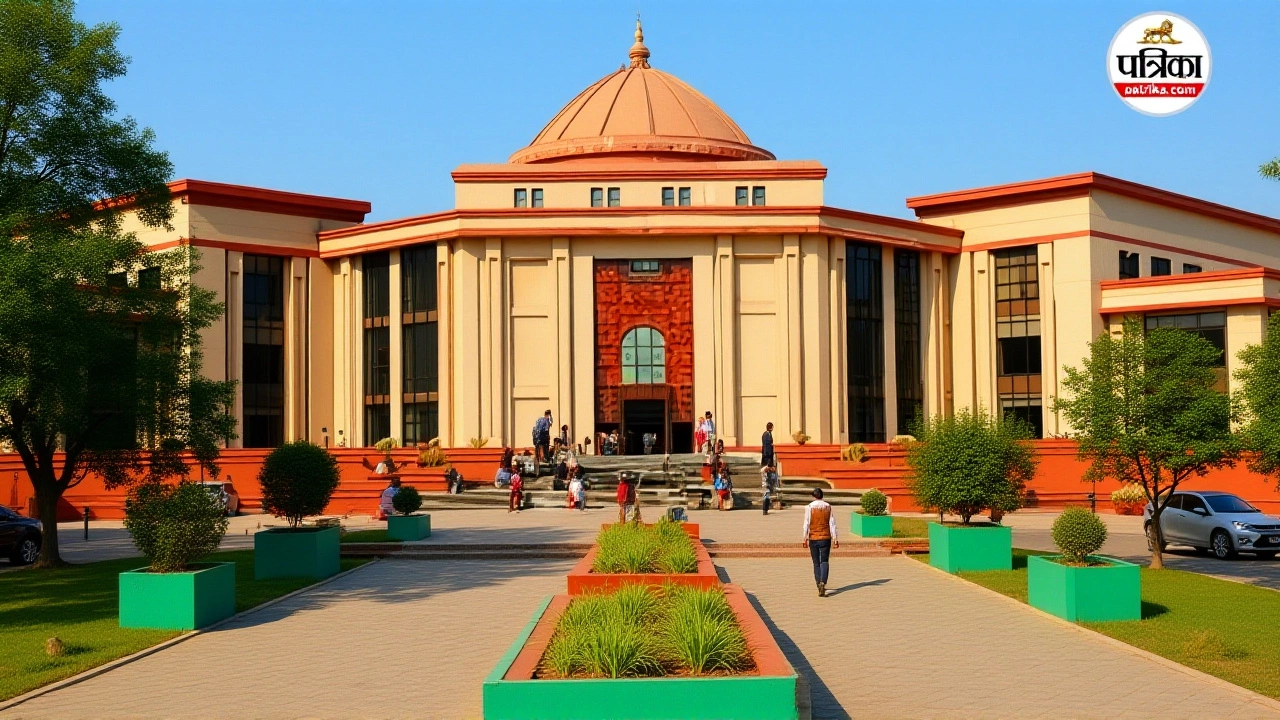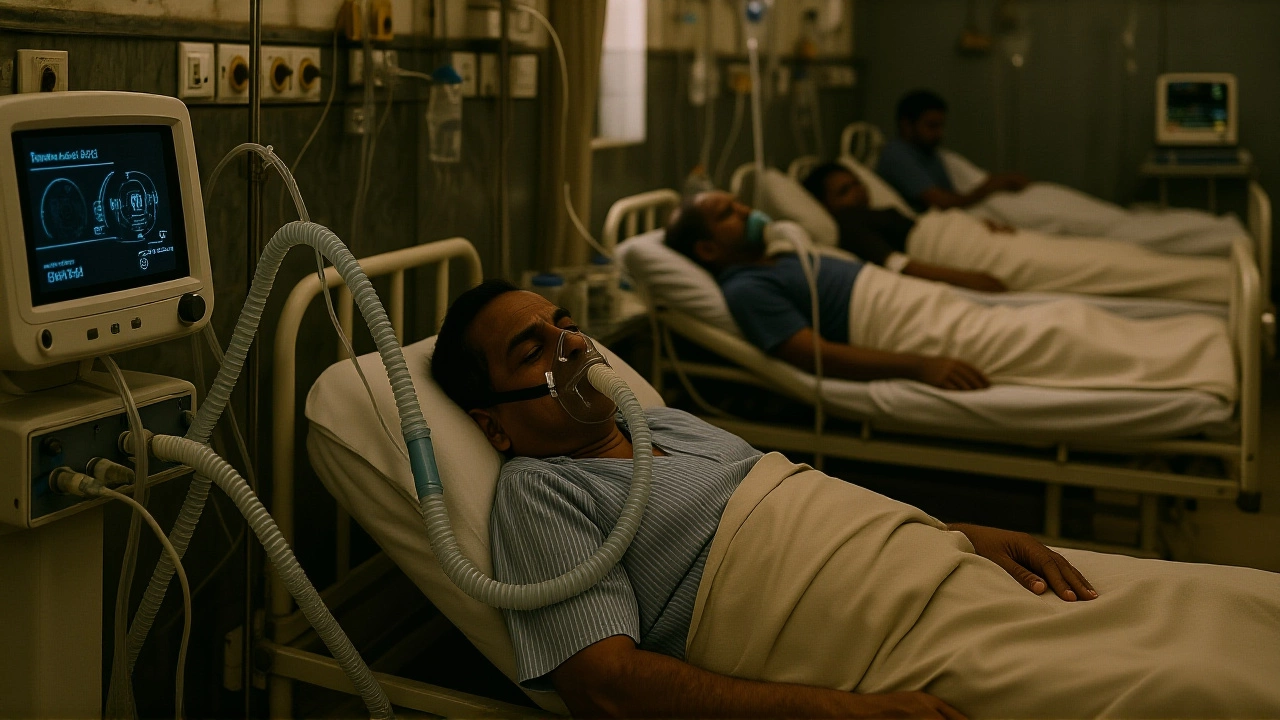When Delhi Health Minister Pankaj Singh stood before reporters on October 17, 2025, and insisted that Lok Nayak Hospital had "all 80 ventilators functional," he was contradicting data from a Right to Information (RTI) request that showed something far more alarming: 92 out of 297 ventilators across five major Delhi government hospitals were dead. Not broken. Not under repair. Non-functional. And the worst of it? Lok Nayak Hospital alone had more than 70 ventilators out of commission — including all 12 in Ward 32, and every single one of the eight in Ward 31. This isn’t a glitch. It’s a collapse.
How Did We Get Here?
The ventilator crisis didn’t appear overnight. It was built over years of neglect. Between 2014 and 2025, the Delhi government bought 646 ventilators. At the peak of the pandemic in 2021, 400 were rushed in under the PM CARES Fund. But since then? Just seven more were added in 2024. Zero in 2025. Meanwhile, maintenance files for critical equipment remain unprocessed. No one’s signing off on Annual Maintenance Contracts. No one’s tracking which machine is working, which one’s been sitting idle since 2022, or which one was moved during a "redeployment" of 15–20 units — some of them PM CARES units — to make the numbers look better.
It’s not just Lok Nayak. Maulana Azad Medical College (MAMC) has 95% of its Obstetrics and Gynaecology ventilators working. Sushruta Trauma Centre’s ICU is at 86%. Deen Dayal Upadhyay Hospital boasts 25 fully operational ICU ventilators. But those are islands in a sea of failure. At Lal Bahadur Shastri Hospital, only one of 13 is broken. That’s good. But it doesn’t fix the fact that one-third of the city’s life-support machines are dead.
When the Numbers Don’t Add Up
Minister Singh’s claim that "the information being circulated is misleading" rang hollow to anyone who’s seen the RTI responses. The data isn’t speculative. It’s institutional. Ward-by-ward counts. Serial numbers logged. Dates of last servicing recorded — or not. The fact that Lok Nayak Hospital had zero working ventilators in two critical wards isn’t a rumor — it’s a documented failure. And when the same hospital has only one functioning MRI machine — like Govind Ballabh Pant Hospital — you start to see a pattern: underinvestment, mismanagement, and a culture of denial.
Even the hospital’s own staff admitted the truth quietly. One nurse, speaking off-record, said: "We’ve been using backup bags for weeks. If a patient deteriorates fast, we pray they don’t need a ventilator. We know they’re not there."

More Than Machines: The ICU Bed Crisis
It’s not just ventilators. It’s space. It’s beds. Ashok Agarwal, the Delhi High Court-appointed amicus curiae, told the court that government hospitals once had only 4% ICU beds — far below the 5–7% mandated by Delhi’s own health policy. The court ordered 10%. That target? Still unmet. So when a patient like Rishabh — a 42-year-old father of two with severe pneumonia — is turned away from three hospitals in a single day, it’s not bad luck. It’s policy failure.
And here’s the cruel twist: while ventilators sit idle or broken, many of the ICU beds themselves are unstaffed. Nurses are stretched thin. Doctors are working 18-hour shifts. The system isn’t just broken — it’s exhausted.
What’s Being Done? (And What’s Just Talk)
After the India Today exposé on October 8, 2025, the Delhi government scrambled. YouTube Shorts showed technicians opening ventilator panels, replacing filters, and "rebooting" machines. A few units were reportedly repaired. But that’s a Band-Aid. You can’t fix 92 machines with a weekend sprint. The real fix? A system that tracks every device in real time.
Health Secretary Pankaj Singh promised the Hospital Management Information System (HMIS) would soon flag ICU bed availability live. That’s good — if it’s implemented. But HMIS has been "coming soon" since 2021. Meanwhile, the procurement of MRI and CT scan machines is underway, with a goal of equipping all government hospitals by January 2026. That’s two years after the pandemic ended. And still, no mention of hiring more ICU nurses or training technicians to maintain these machines.

What’s Next?
Patients aren’t waiting. Families are filing petitions. The Delhi High Court is watching. And if nothing changes, the next surge — whether from flu, dengue, or a new respiratory virus — will be catastrophic. Right now, Delhi’s public hospitals are running on hope and prayer. Not policy. Not planning. Not even accountability.
It’s not about politics. It’s about survival.
Frequently Asked Questions
How many ventilators are actually working in Delhi’s government hospitals?
As of October 2025, only 205 of 297 ventilators across five major Delhi government hospitals are functional — a 31% failure rate. The worst-hit is Lok Nayak Hospital, where over 70 units are dead, including entire wards with zero working machines. The Delhi government claims repairs are underway, but no public dashboard tracks real-time status.
Why are PM CARES Fund ventilators failing so badly?
Of the 92 non-functional ventilators, 41 were supplied under the PM CARES Fund during the 2021 pandemic surge. Many arrived without proper maintenance protocols, and no long-term servicing plan was established. Unlike state-purchased units, these machines often lack serial number tracking or assigned maintenance teams — leaving them to deteriorate silently.
Is the Delhi government meeting its legal obligation for ICU beds?
No. Delhi’s own health policy requires 5–7% of hospital beds to be ICU-capable. The Delhi High Court ordered 10%. Yet, government hospitals still hover around 4%. Even when ventilators are working, there aren’t enough staffed beds to use them. This gap leaves thousands of patients without access to critical care annually.
What’s being done to fix the maintenance problem?
The Delhi government has launched emergency repairs on PM CARES ventilators and aims to install a Hospital Management Information System (HMIS) by early 2026 to track equipment status. But no new staff have been hired for maintenance, and Annual Maintenance Contracts remain unprocessed for most units. Without dedicated technicians and budgets, repairs will remain reactive, not preventive.
Why don’t we hear about this in the media more often?
The crisis is systemic, not sensational. Unlike a single disaster, it’s a slow bleed — ventilators dying one by one, nurses overwhelmed, families turned away. It doesn’t make headlines unless an RTI exposes it. Even then, official responses often dismiss the data. Only when patients die waiting does public outrage briefly surface — then it fades.
Can private hospitals fill the gap?
Not for most Delhi residents. Private ICU beds cost ₹15,000–₹30,000 per day — unaffordable for 70% of the population. Government hospitals are supposed to be the safety net. When they fail, the poor have nowhere to go. The ventilator crisis isn’t just about machines — it’s about justice.


